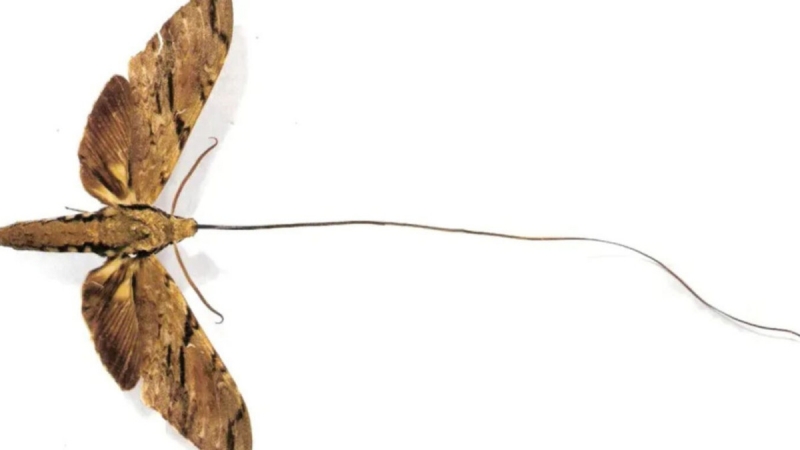
Insect, the appearance of which was predicted by Darwin/Wikimedia Commons
Earth is home to the incredible number of species of living creatures and some of them never cease to amaze scientists with certain parts of their bodies: for example, giraffes and their phenomenal necks. However, scientists have now also discovered an insect with an incredibly long tongue.
Scientists discovered one specimen, which has a tongue length of 28.5 centimeters in the unfolded state – this is probably a record holder. IFLScience writes about it.
What is even more interesting is that the existence of this insect was predicted more than 160 years ago by Charles Darwin and Alfred Wallace. In 1862, Charles Darwin was sent a Madagascar orchid (Angraecum sesquipedale) with a nectar tube 30 centimeters long.
The scientist was fascinated by the plant and the potential discovery – there should be a creature on the planet capable of consuming nectar from this tube. He later shared this observation in a letter with a friend.
200% Deposit Bonus up to €3,000 180% First Deposit Bonus up to $20,000Just 5 years later, Alfred Russell Wallace was pondering the same species of orchid and suggested that a species of aphid was probably the most suitable candidate to the title of an insect with a record length tongue, the length of which would be enough to drink nectar from this tube.
Researchers agreed that there must be an insect capable of feeding on this flower in Madagascar. The researchers were right. Back in 1903, the moth was considered a subspecies of Morgan's sphinx moth (Xanthopan morganii).
However, a new study confirmed that the moth with the record-long tongue is actually a completely new species, named Xanthopan praedicta.

An insect whose appearance was predicted by Darwin/Wikimedia Commons
Note that most proboscis measurements of this species were obtained from museum and private collections. But in March 2020, everything changed: for the first time, scientists measured live moths by carefully spreading their proboscis with a hairpin.
The results indicate that one specimen had a tongue length of 28.5 centimeters when fully extended. . It is interesting that in most individuals of the new species Xanthopan praedicta, the tongue was on average 6.6 centimeters longer than that of Morgan's sphinx moth.

